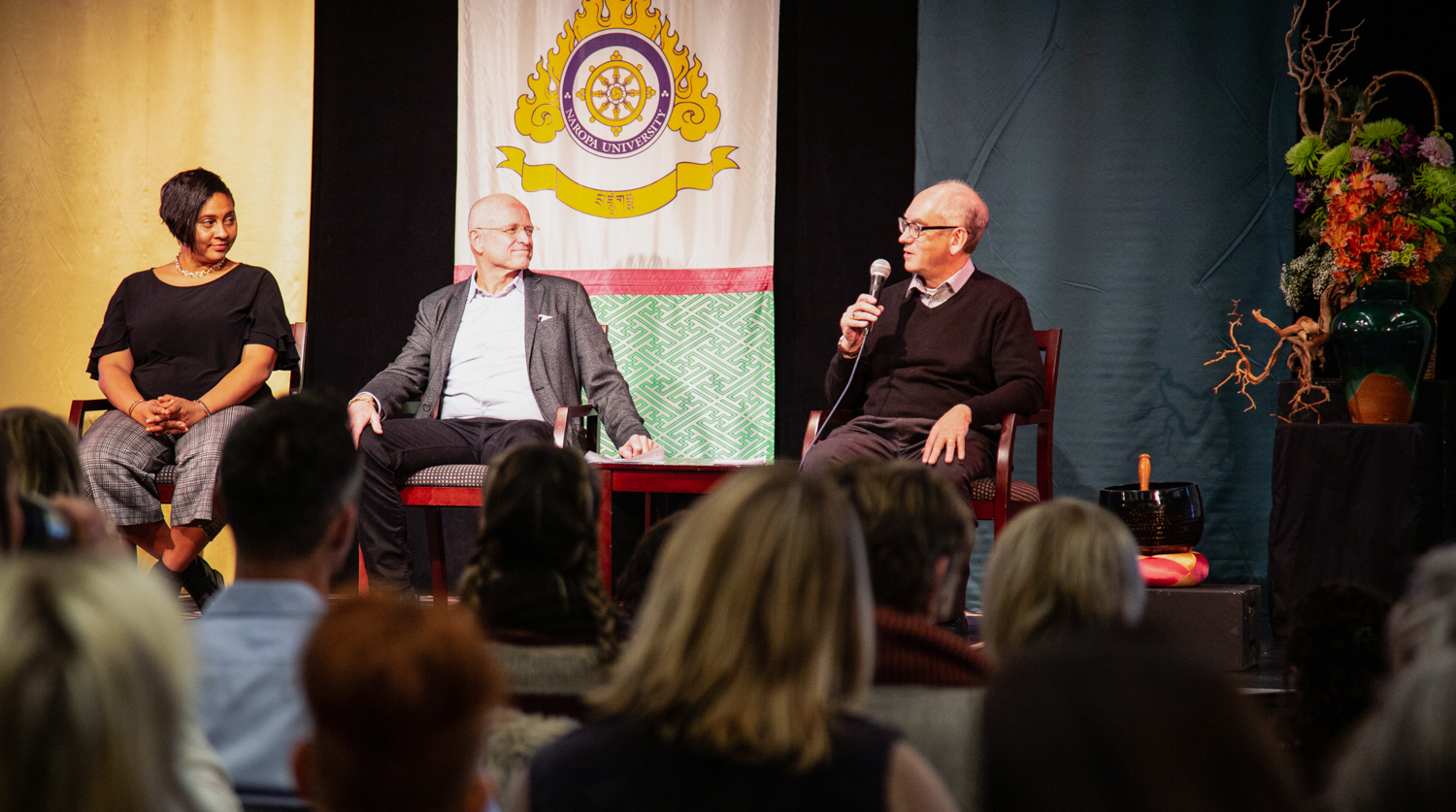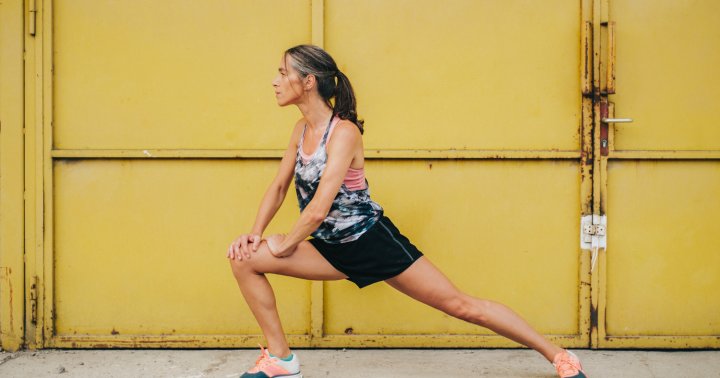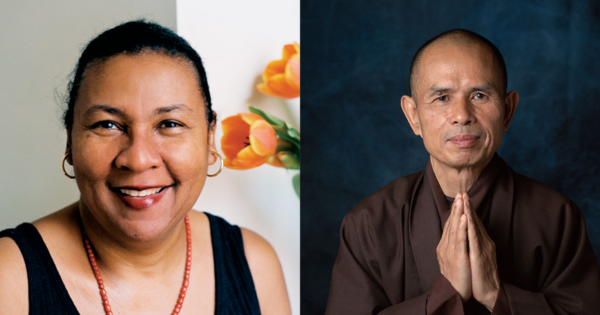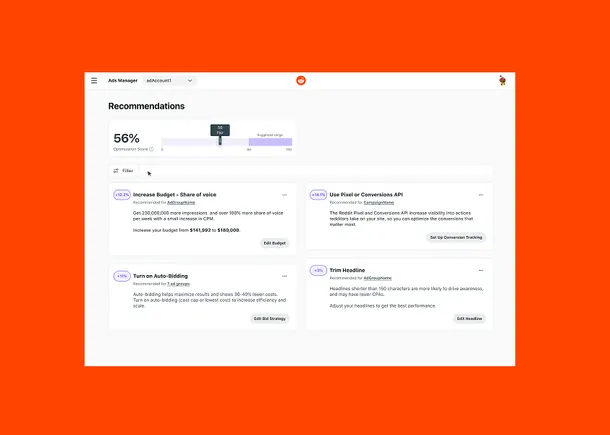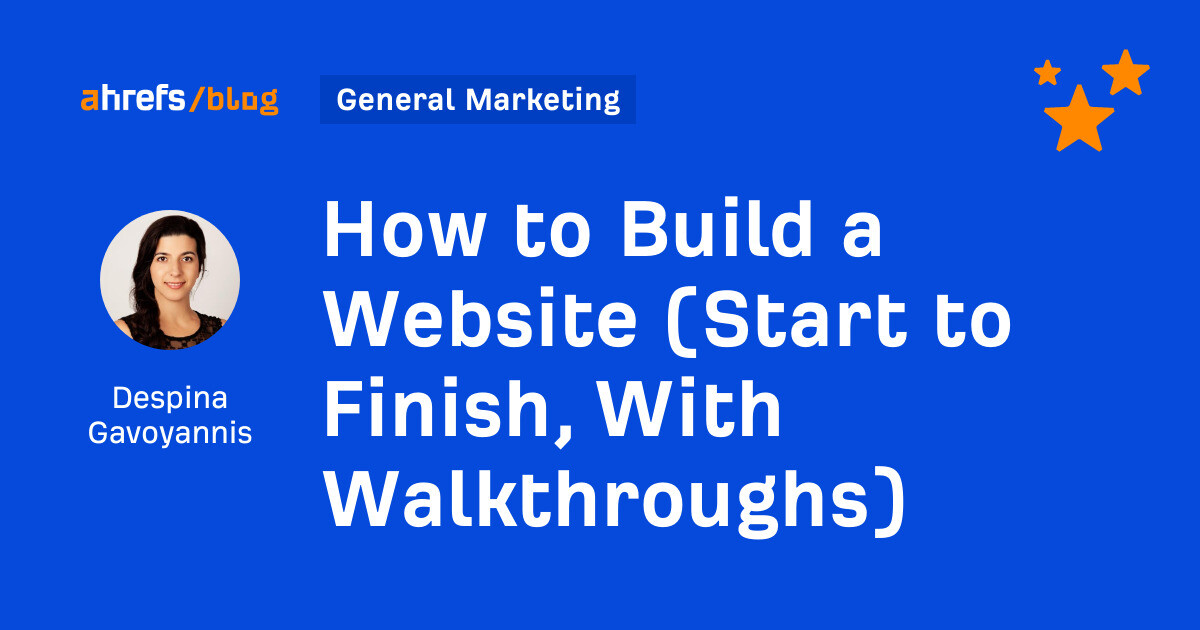Downward Dog for Beginners and Men
This quintessential yoga posture stretches the calves and hamstrings, properly aligns the spine, improves shoulder mobility, and strengthens your hips, back, and core. It’s great for athletes to improve lower-body strength and flexibility, and for weight lifters who need...
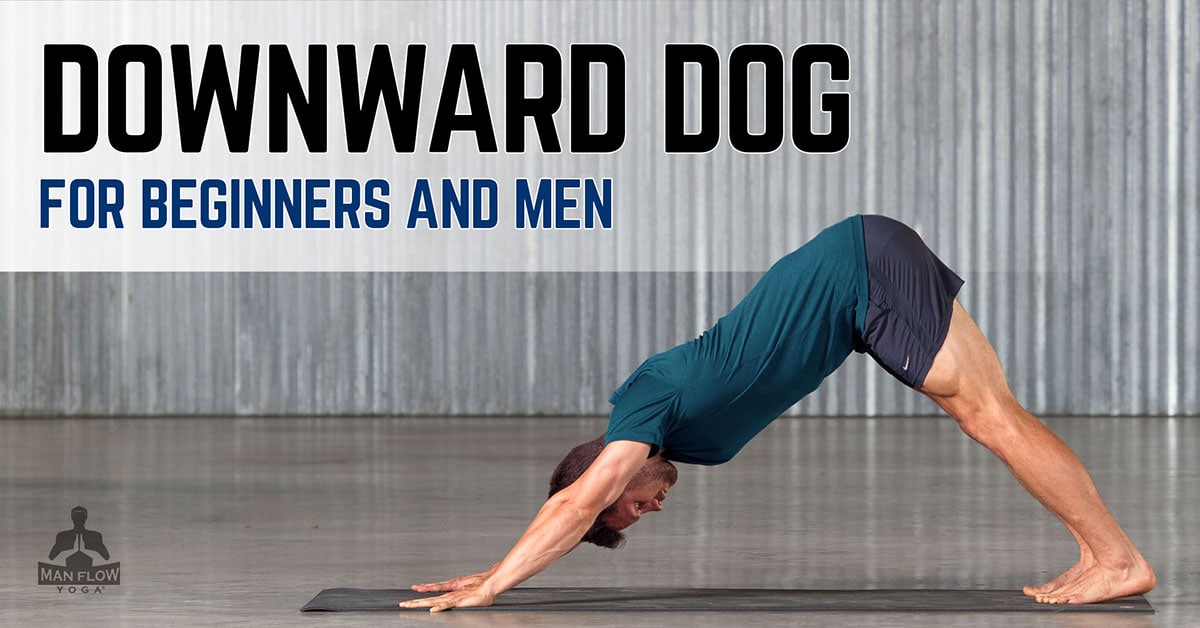
This quintessential yoga posture stretches the calves and hamstrings, properly aligns the spine, improves shoulder mobility, and strengthens your hips, back, and core. It’s great for athletes to improve lower-body strength and flexibility, and for weight lifters who need to stretch tight muscles and recover quickly.
Downward Dog Target Muscles
hamstrings hips core shoulders upper back calvesDownward Dog Benefits
Increases hamstring mobility Improves shoulder strength and mobility Stretches calves to relieve ankle and knee tensionHow to do Downward Dog for Beginners
Start in Plank (see p88) with your shoulders over your hands, core engaged, feet hip-width apart, and toes tucked. Lift hips to form a straight line from shoulders to heels. Lift your hips back and up to form a pyramid shape with your body. Focus on creating a straight line from hands to hips. Squeeze your upper thighs and abdominal muscles toward each other. Rotate biceps slightly forward to open your shoulders and release tension in the neck. Squeeze your arms and shoulders toward each other to engage the upper body. Relax your neck to look back at your feet. Release heels toward the floor to stretch the calves. Hold the posture, inhaling as you lengthen and lift, and exhaling as you deepen the stretch and increase engagement.Cues for Downward Dog
Squeeze arms and shoulders toward each other Squeeze core and upper thighs toward each other Lengthen hamstrings to help flatten lower back Slightly rotate thighs inward and squeeze legs toward each other Relax heels toward ground, lifting toes if possibleYOU SHOULD FEEL
Stretch in hamstrings, mid- and upper back, and shoulders Engagement of quadriceps and coreYOU SHOULDN’T FEEL
All your weight in shoulders and wrists; if so, pull shoulders away from ears and transfer weight to upper back, palms, and fingersDownward Dog Pro Tip
Once you’re in the final pose, use a mirror to view yourself from the side, and focus on making your back flat. If you have trouble flattening it, walk your feet farther away from your hands, or bend your knees.
Downward Dog Modification
If it’s difficult to engage the correct muscles, firmly plant your feet, hinge at the hips, and press your hands into a sturdy external support to form an L-shape with your body. Keep ribs drawn in, and avoid splaying open the chest. Notice what proper engagement feels like, then try on the floor.
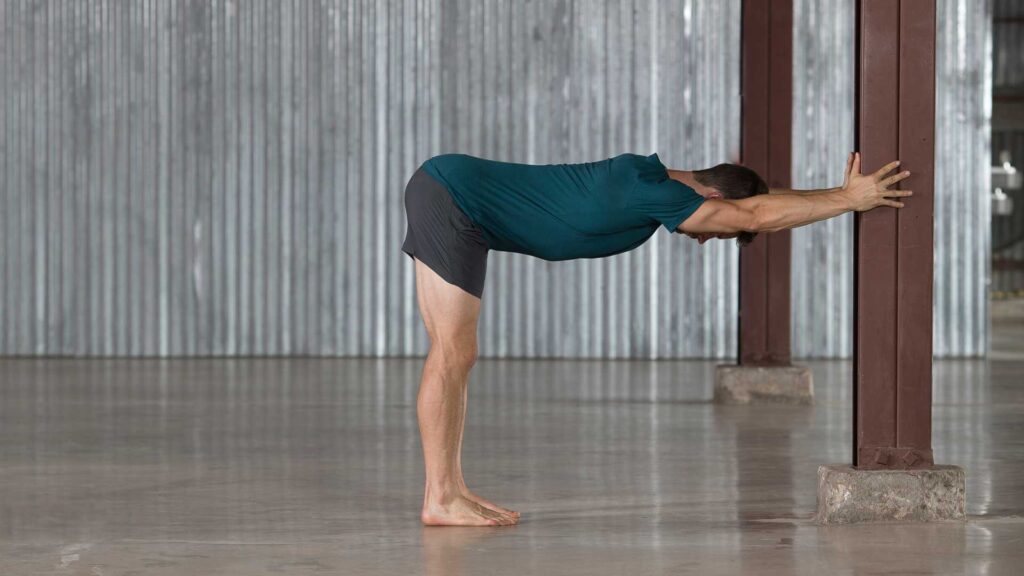 Downward Dog Modification
Downward Dog ModificationAbout Dean Pohlman, Founder & CEO of Man Flow Yoga, Author of Yoga Fitness for Men, Expert on Yoga Fitness for Men.
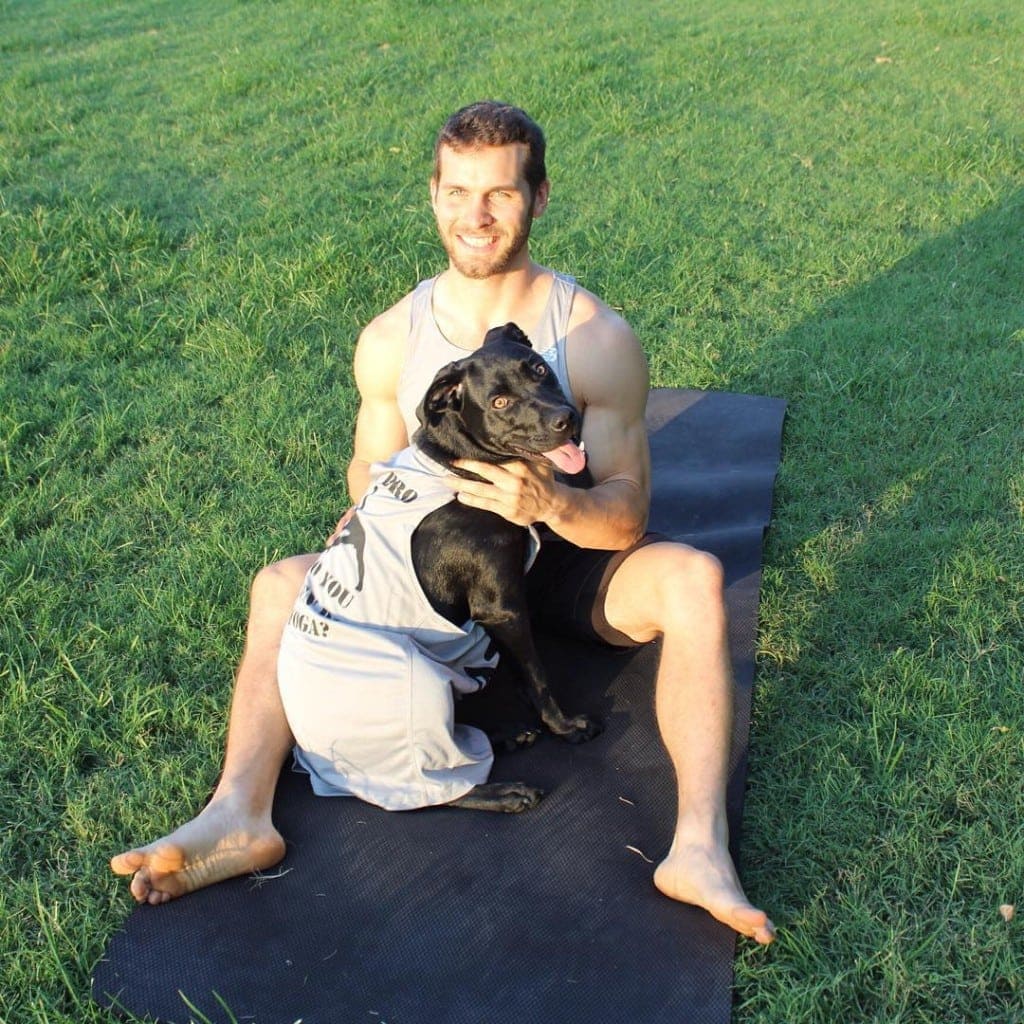
Dean Pohlman is an E-RYT 200 certified yoga instructor and the founder of Man Flow Yoga. Dean is widely considered to be an authority on Yoga for Men. He has worked with physical therapists to create yoga programs for back health and spinal recovery. His workouts and programs have been used by professional and collegiate athletes, athletic trainers, and personal trainers; and have been recommended by physical therapists, doctors, chiropractors, and other medical professionals.
Dean is a successfully published author through DK Publishing (Yoga Fitness for Men), selling 35,000 copies worldwide in English, French, and German; in addition to being a co-producer of the Body by Yoga DVD Series, which has sold over 40,000 copies on Amazon since its release in 2016.
Man Flow Yoga has been featured in Muscle & Fitness Magazine, Mens’ Health, The Chicago Sun, New York Magazine, and many more major news media outlets.
FAQs
How long to hold downward dog?
Since this blog was written for beginners in mind, 30 seconds to 1 minute is generally a good place to start. As your comfort level grows, you can gradually increase the duration up to 2-3 minutes.
What does downward dog stretch?
Downward dog pose effects multiple parts of the body, which is why it is such an effective pose. The pose works the hamstrings, calves, shoulders and upper back, spine, chest and shoulders and arms and wrists.
What muscles does downward dog work?
As a beginner, you will initially feel your hamstrings, calves and shoulders working.
Why is downward dog so hard?
Downward dog can be difficult for several reasons, especially for those new to yoga or people with limited flexibility and mobility. With regular practice and progression, those difficulties can be overcome.

 Hollif
Hollif 







